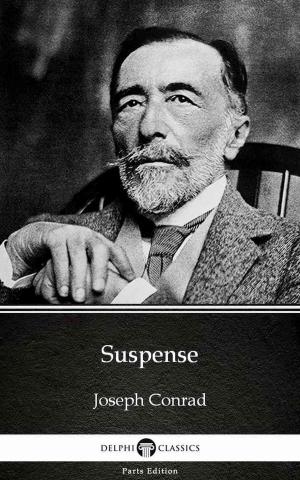| Author: | Eginhard | ISBN: | 6610000028979 |
| Publisher: | PublishDrive | Publication: | August 10, 2017 |
| Imprint: | Merkaba Press | Language: | English |
| Author: | Eginhard |
| ISBN: | 6610000028979 |
| Publisher: | PublishDrive |
| Publication: | August 10, 2017 |
| Imprint: | Merkaba Press |
| Language: | English |
This volume contains two lives of Charles the Great, or Charlemagne (for both forms of the name will be used indifferently in this introduction); both written within a century after his death; both full of admiration for the hero of whom they treat; both written by ecclesiastics; but resembling one another in hardly any other particular. It is not merely the value which each in its different way possesses, but also the great contrast between them, that makes it seem useful to present them together in a single volume. Professor Bury remarked in his inaugural lecture at Cambridge: “It would be a most fruitful investigation to trace from the earliest ages the history of public opinion in regard to the meaning of falsehood and the obligation of veracity”; and these two lives would form an interesting text for the illustration of such a treatise. The restrained, positive, well-arranged narrative of Eginhard seems to belong to a different age from the garrulous, credulous, and hopelessly jumbled story of the Monk of Saint Gall. And yet the two narratives were divided from one another by no long interval of time. It is impossible to fix with any certainty the date of the composition of Eginhard’s life, but there are various indications which make 820 a not impossible date. An incident mentioned by the Monk of Saint Gall makes the task of dating his work within limits an easier one. The work was suggested to him, he tells us, by Charles III. when he stayed for three days at the Monastery of Saint Gall, and it is possible to fix this event, with precision, to the year 883. We may think, therefore, of the Monk’s narrative as being separated from that of Eginhard by more than sixty years, and by about seventy from the death of its hero. But in the ninth century the mist of legend and myth steamed up rapidly from the grave of a well-known figure; there were few documents ready to the hand of a monk writing in the cloister of Saint Gall to assist him in writing an accurate narrative; there was no publicity of publication and no critical public to detect the errors of his work; above all, there was not in his own conscience the slightest possibility of reproach even if, with full consciousness of what he was doing, he changed the facts of history or interpolated the dreams of fancy, provided it were done in such a manner as “to point a moral or adorn a tale.”
And so it is that, whereas through Eginhard’s narrative we look at the life of the great Charles in a clear white light, through a medium which, despite a few inaccuracies, distorts the facts of history wonderfully little, when we take up the narrative of the Monk, on the other hand, we are at once among the clouds of dreamland; and only occasionally does the unsubstantial fabric fade, and allow us to get a glimpse of reality and actual occurrence. But now each of these narratives demands a somewhat more careful scrutiny...
This volume contains two lives of Charles the Great, or Charlemagne (for both forms of the name will be used indifferently in this introduction); both written within a century after his death; both full of admiration for the hero of whom they treat; both written by ecclesiastics; but resembling one another in hardly any other particular. It is not merely the value which each in its different way possesses, but also the great contrast between them, that makes it seem useful to present them together in a single volume. Professor Bury remarked in his inaugural lecture at Cambridge: “It would be a most fruitful investigation to trace from the earliest ages the history of public opinion in regard to the meaning of falsehood and the obligation of veracity”; and these two lives would form an interesting text for the illustration of such a treatise. The restrained, positive, well-arranged narrative of Eginhard seems to belong to a different age from the garrulous, credulous, and hopelessly jumbled story of the Monk of Saint Gall. And yet the two narratives were divided from one another by no long interval of time. It is impossible to fix with any certainty the date of the composition of Eginhard’s life, but there are various indications which make 820 a not impossible date. An incident mentioned by the Monk of Saint Gall makes the task of dating his work within limits an easier one. The work was suggested to him, he tells us, by Charles III. when he stayed for three days at the Monastery of Saint Gall, and it is possible to fix this event, with precision, to the year 883. We may think, therefore, of the Monk’s narrative as being separated from that of Eginhard by more than sixty years, and by about seventy from the death of its hero. But in the ninth century the mist of legend and myth steamed up rapidly from the grave of a well-known figure; there were few documents ready to the hand of a monk writing in the cloister of Saint Gall to assist him in writing an accurate narrative; there was no publicity of publication and no critical public to detect the errors of his work; above all, there was not in his own conscience the slightest possibility of reproach even if, with full consciousness of what he was doing, he changed the facts of history or interpolated the dreams of fancy, provided it were done in such a manner as “to point a moral or adorn a tale.”
And so it is that, whereas through Eginhard’s narrative we look at the life of the great Charles in a clear white light, through a medium which, despite a few inaccuracies, distorts the facts of history wonderfully little, when we take up the narrative of the Monk, on the other hand, we are at once among the clouds of dreamland; and only occasionally does the unsubstantial fabric fade, and allow us to get a glimpse of reality and actual occurrence. But now each of these narratives demands a somewhat more careful scrutiny...















